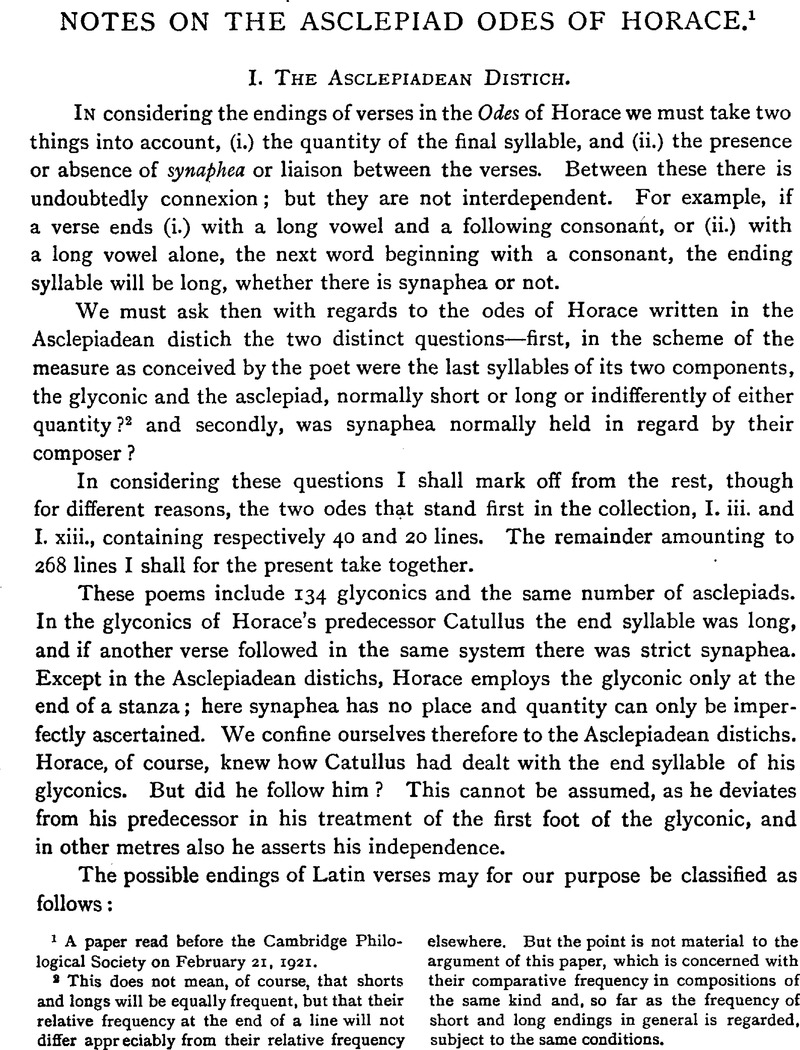Article contents
Notes on the Asclepiad Odes of Horace1
Published online by Cambridge University Press: 11 February 2009
Abstract

Information
- Type
- Research Article
- Information
- Copyright
- Copyright © The Classical Association 1922
References
page 29 note 2 This does not mean, of course, that shorts and longs will be equally frequent, but that their relative frequency at the end of a line will not differ appreciably from their relative frequency elsewhere. But the point is not material to the argument of this paper, which is concerned with their comparative frequency in compositions of the same kind and, so far as the frequency of short and long endings in general is regarded, subject to the same conditions.
page 30 note 1 As the word closes a stanza, the liaison or synaphea ‘ dedi t-ergo,’ and consequently the short quantity, is out of the question.
page 30 note 2 I agree with W. R. Hardie's contention that in Epodes V. 100 ‘et Esquilinae alites’ ae is a long syllable.
page 31 note 1 See Class. Rev. XXXII. (1918), p. 26Google Scholar.
page 31 note 2 See the writer's Adnotanda in Latin Prosody in Class. Quart. XI. (1917), pp. 173 sq., 178Google Scholar; and for examples Vollmer's, F.Horati Carmina, p. 344Google Scholar.
page 33 note 1 This may perhaps be held to excuse certain ‘lengthenings’ of-a which are nowhere matched in the case of other vowels, as Ennius' ‘et densis aquila pinnis obnixa uolabat’ A. 149, and Vergil's ‘auro grauia sectoque elephanto’ A. III. 464, and Horace's ‘Licentia’ cited above.
page 33 note 2 It may perhaps save an enquirer some trouble If I subjoin the numbers of the poems in the Asclepiadean distichs in which occur examples of (a), (b), (c). They are for the glyconic: (a) I. xix.; (b) I. xxxvi., III. ix. (2), xv., xix. (2), xxiv., xxv. (2); (c) III. xix., xxiv. (2), IV. i.; and for the asclepiad (odd distichs): (a) I, xix., xxxvi. (2), (b) I. xix. (2), III. xxiv. (2), (IV. iii.); (c) III. ix., xv., IV. i.
- 1
- Cited by

